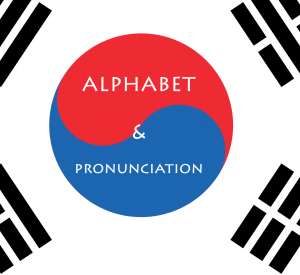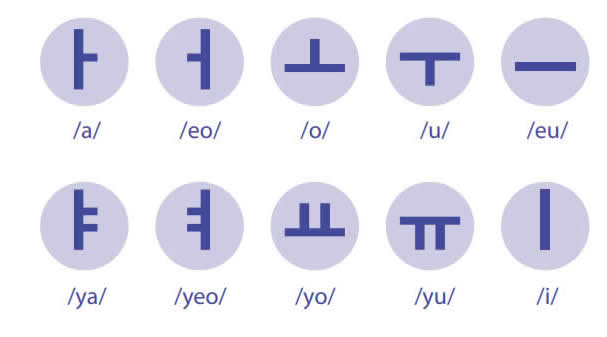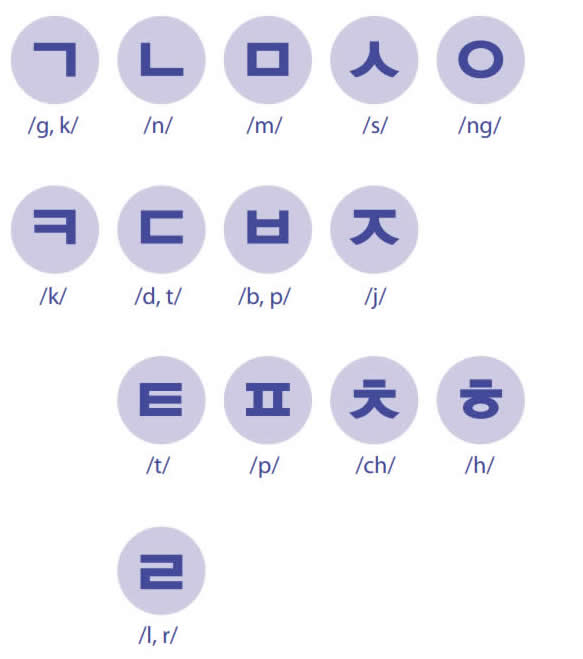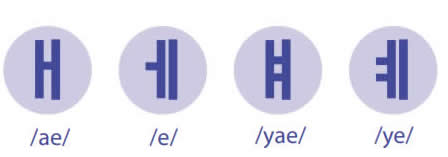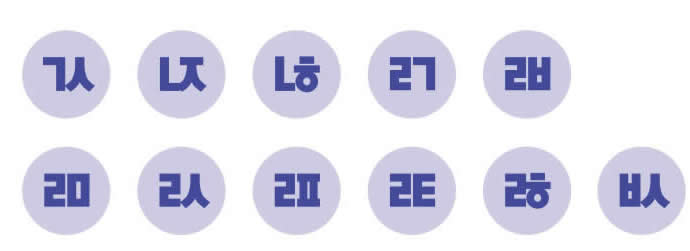Difference between revisions of "Language/Korean/Pronunciation/Alphabet-and-Pronunciation"
m (Quick edit) |
|||
| (36 intermediate revisions by 2 users not shown) | |||
| Line 1: | Line 1: | ||
<span class="notranslate"> | |||
[[File:Korean-alphabet-pronunciation.png|thumb]] | [[File:Korean-alphabet-pronunciation.png|thumb]] | ||
</span> | |||
=Korean Alphabet, Pronuncation, Video, Virtual Keyboard...= | |||
<span class="notranslate"> | |||
__TOC__ | |||
</span> | |||
Hello Polyglots,😀 | Hello Polyglots,😀 | ||
In today's lesson, you will learn how to write the different letters of the Korean alphabet, how to pronounce these letters whether it is through the International Phonetic Alphabet (IPA), or through a video with the pronunciation of the letters by a native speaker. | In today's lesson, you will learn how to write the different letters of the Korean alphabet, how to pronounce these letters whether it is through the International Phonetic Alphabet <span class="notranslate">(IPA)</span>, or through a video with the pronunciation of the letters by a native speaker. | ||
You will also find at the end of this lesson a virtual keyboard to be able to type each special character of the Korean language. | |||
<!--SPLIT--> | |||
---- | |||
The Korean alphabet is a writing system created in 1443 and promulgated in 1446 during the reign of <span class="notranslate">King Sejong</span>, the fourth king of the <span class="notranslate">Joseon</span> dynasty (1392-1910). | |||
Originally regarded as a "vulgar script" <span class="notranslate">(eonmun, 언문)</span>, it began to be widely used and appreciated after the Japanese colonization of the peninsula, when it became an instrument of self-determination against foreign domination over the peninsula. Korean territory. The Korean alphabet is currently used in South Korea, where it is called <span class="notranslate">Hangeul (한글)</span> and in North Korea, where it is called <span class="notranslate">Joseongeul (조선 글)</span> and also by Korean communities overseas, mainly in China and the United States. | |||
As part of a project abandoned in 2012, South Korea sought to export the alphabet abroad to provide a writing system for linguistic minorities lacking a proper writing system. | |||
<!--SPLIT--> | |||
== | ==Korean Alphabet== | ||
The Korean language has 40 different letters. While learning Korean, it is incredibly important to learn the alphabet, especially if you ever want to become fluent in a language. This is because some of the pronunciations are very similar to one another, and this can become confusing. Another reason is because the letters don't sound exactly like the romanticized versions of the letters. | |||
The Chinese writing system is considered logographic. Korean also uses <span class="notranslate">Hanja</span> and Japanese uses <span class="notranslate">Kanji</span>, which would both be considered logographic. | |||
<!--SPLIT--> | |||
Japanese <span class="notranslate">Hiragana</span>, <span class="notranslate">Katakana</span> and <span class="notranslate">Hangeul</span> are all phonographic but that <span class="notranslate">Hangeul</span> has the distinction of also being phonocharacterized. Initially, the alphabet had twenty-eight main letters, which over time have been reduced to twenty-four. | |||
* | Eight are considered basic sounds, and from these derive all the other consonants and vowels. We must first distinguish between: | ||
* 5 basic consonants <span class="notranslate">[ㄱ, ㄴ,ㅁ,ㅅ,ㅇ]</span> from which derive the fourteen simple consonants. | |||
* 3 basic vowels <span class="notranslate">[ •, ㅣ, ㅡ]</span> from which derive the first ten, simple, or iotized, vowels. | |||
<!--SPLIT--> | |||
From the fourteen simple consonants <span class="notranslate">(ㄱ, ㄴ, ㄷ, ㄹ, ㅁ, ㅂ, ㅅ, ㅇ, ㅈ, ㅊ, ㅋ, ㅌ, ㅍ, ㅎ)</span> are derived in turn five double consonants <span class="notranslate">(ㄲ, ㄸ, ㅃ, ㅆ, ㅉ)</span> and eleven complex combinations <span class="notranslate">(ㄳ, ㄵ, ㄶ, ㄺ, ㄼ, ㄻ, ㄽ, ㄿ, ㄾ, ㅀ, ㅄ)</span>. | |||
The ten simple vowels <span class="notranslate">(ㅏ, ㅑ, ㅓ, ㅕ, ㅗ, ㅛ, ㅜ, ㅠ, ㅡ, ㅣ)</span> are followed by four complex vowels <span class="notranslate">(ㅐ,ㅒ, ㅔ, ㅖ)</span> and seven diphthongs <span class="notranslate">(ㅘ, ㅙ, ㅚ, ㅝ, ㅞ, ㅟ, ㅢ)</span>. | |||
===Basic Vowels=== | |||
<span class="notranslate"> | |||
[[File:Korean-Language-simple-vowels2-PolyglotClub.jpg]] | |||
</span> | |||
<!--SPLIT--> | |||
===Basic Consonants=== | |||
<span class="notranslate"> | |||
[[File:Korean-Language-SIMPLE-consonants2-PolyglotClub.jpg]] | |||
</span> | |||
<!--SPLIT--> | |||
===Compound Vowels=== | ===Compound Vowels=== | ||
====Complex Vowels==== | ====Complex Vowels==== | ||
[[File:Korean-Language-COMPLEX- | <span class="notranslate"> | ||
[[File:Korean-Language-COMPLEX-vowels2-PolyglotClub.jpg]] | |||
</span> | |||
===Diphtongs=== | ===Diphtongs=== | ||
[[File:Korean-Language- | <span class="notranslate"> | ||
[[File:Korean-Language-diphtongs2-PolyglotClub.jpg]] | |||
</span> | |||
<!--SPLIT--> | |||
===Double Consonants=== | |||
<span class="notranslate"> | |||
[[File:Korean-Language-DOUBLE-consonants2-PolyglotClub.jpg]] | |||
</span> | |||
<!--SPLIT--> | |||
===Complex combinations=== | |||
<span class="notranslate"> | |||
[[File:Korean-Language-complex-combinations2-PolyglotClub.jpg]] | |||
</span> | |||
<!--SPLIT--> | |||
==Video - Korean Alphabet Pronunciation by a Native Speaker== | ==Video - Korean Alphabet Pronunciation by a Native Speaker== | ||
<span class="notranslate"> | |||
<youtube>CdiR-6e1h0o</youtube> | <youtube>CdiR-6e1h0o</youtube> | ||
</span> | |||
==Korean Online Virtual Keyboard== | ==Korean Online Virtual Keyboard== | ||
__NOCACHE__<include iframe src= | <span class="notranslate"> | ||
__NOCACHE__ | |||
<include iframe="" src="https://polyglotclub.com/keyboard.php?souscat_url=korean" height="600px" frameborder="0" scrolling="yes" /> | |||
</span> | |||
<!--SPLIT--> | |||
{{#seo: | |||
|title=Learn the Korean alphabet and pronunciation | |||
|keywords=writing , letters, pronounce, systems, vowels, consonants, diphtongs, Keyboard, video, native speaker | |||
|description=In this lesson we will learn how to write and pronounce the Korean alphabet | |||
|og:image=https://polyglotclub.com/wiki/images/9/93/Korean-Language-simple-vowels2-PolyglotClub.jpg | |||
}} | |||
[[ | ==Other Lessons== | ||
* [[Language/Korean/Pronunciation/Write-and-Pronounce-Korean-Vowels|Write and Pronounce Korean Vowels]] | |||
* [[Language/Korean/Pronunciation/How-to-write-Korean-syllables|How to write Korean syllables]] | |||
* [[Language/Korean/Pronunciation/Complex-finals|Complex finals]] | |||
<span links></span> | |||
Latest revision as of 21:16, 25 March 2023
Korean Alphabet, Pronuncation, Video, Virtual Keyboard...[edit | edit source]
Hello Polyglots,😀
In today's lesson, you will learn how to write the different letters of the Korean alphabet, how to pronounce these letters whether it is through the International Phonetic Alphabet (IPA), or through a video with the pronunciation of the letters by a native speaker.
You will also find at the end of this lesson a virtual keyboard to be able to type each special character of the Korean language.
The Korean alphabet is a writing system created in 1443 and promulgated in 1446 during the reign of King Sejong, the fourth king of the Joseon dynasty (1392-1910).
Originally regarded as a "vulgar script" (eonmun, 언문), it began to be widely used and appreciated after the Japanese colonization of the peninsula, when it became an instrument of self-determination against foreign domination over the peninsula. Korean territory. The Korean alphabet is currently used in South Korea, where it is called Hangeul (한글) and in North Korea, where it is called Joseongeul (조선 글) and also by Korean communities overseas, mainly in China and the United States.
As part of a project abandoned in 2012, South Korea sought to export the alphabet abroad to provide a writing system for linguistic minorities lacking a proper writing system.
Korean Alphabet[edit | edit source]
The Korean language has 40 different letters. While learning Korean, it is incredibly important to learn the alphabet, especially if you ever want to become fluent in a language. This is because some of the pronunciations are very similar to one another, and this can become confusing. Another reason is because the letters don't sound exactly like the romanticized versions of the letters.
The Chinese writing system is considered logographic. Korean also uses Hanja and Japanese uses Kanji, which would both be considered logographic.
Japanese Hiragana, Katakana and Hangeul are all phonographic but that Hangeul has the distinction of also being phonocharacterized. Initially, the alphabet had twenty-eight main letters, which over time have been reduced to twenty-four.
Eight are considered basic sounds, and from these derive all the other consonants and vowels. We must first distinguish between:
- 5 basic consonants [ㄱ, ㄴ,ㅁ,ㅅ,ㅇ] from which derive the fourteen simple consonants.
- 3 basic vowels [ •, ㅣ, ㅡ] from which derive the first ten, simple, or iotized, vowels.
From the fourteen simple consonants (ㄱ, ㄴ, ㄷ, ㄹ, ㅁ, ㅂ, ㅅ, ㅇ, ㅈ, ㅊ, ㅋ, ㅌ, ㅍ, ㅎ) are derived in turn five double consonants (ㄲ, ㄸ, ㅃ, ㅆ, ㅉ) and eleven complex combinations (ㄳ, ㄵ, ㄶ, ㄺ, ㄼ, ㄻ, ㄽ, ㄿ, ㄾ, ㅀ, ㅄ).
The ten simple vowels (ㅏ, ㅑ, ㅓ, ㅕ, ㅗ, ㅛ, ㅜ, ㅠ, ㅡ, ㅣ) are followed by four complex vowels (ㅐ,ㅒ, ㅔ, ㅖ) and seven diphthongs (ㅘ, ㅙ, ㅚ, ㅝ, ㅞ, ㅟ, ㅢ).
Basic Vowels[edit | edit source]
Basic Consonants[edit | edit source]
Compound Vowels[edit | edit source]
Complex Vowels[edit | edit source]
Diphtongs[edit | edit source]
Double Consonants[edit | edit source]
Complex combinations[edit | edit source]
Video - Korean Alphabet Pronunciation by a Native Speaker[edit | edit source]
Korean Online Virtual Keyboard[edit | edit source]
Other Lessons[edit | edit source]
